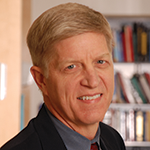His lack of progress started to raise concerns among his superiors. The Howard Hughes Medical Institute, his source of research funding, declined to renew his grant, and UCSF notified him that he would not be promoted to tenure. Crushing disappointments, to say the least. But Stanley Prusiner, MD, stood firm. He truly believed in the validity of his data. With new support from, of all sources, Big Tobacco (R.J. Reynolds Company), he was able to demonstrate that his findings were not artifactual, as had been suggested by his many detractors. The scrapie agent was, in fact, a protein devoid of any nucleic acids. The publication of his manuscript in 1982, wherein he introduced the term “prion” set off a firestorm of controversy.3 Virologists were generally incredulous. The idea of a protein being an infectious agent seemed heretical. How could a string of amino acids transmit disease?
The spat spilled over to the lay media. Dr. Prusiner’s wife recalled the family’s sense of vulnerability as her husband was pilloried in the press. Being a tough Midwesterner, he refused to back down. Instead, Dr. Prusiner sought to vindicate his theories, first by sequencing the prion protein and then by cloning the gene encoding it. He finally silenced his critics when his research group identified the prion that transmitted the frightening illness known as “Mad Cow Disease,” or bovine spongiform encephalitis (BSE). His illuminating discoveries won him the 1997 Nobel Prize in Physiology or Medicine. Stanley Prusiner abided by the kindergarten proverb about the need to keep trying whenever one fails to succeed.
Fulfilling Koch’s Four Postulates
For rheumatologists of a certain age, the term “nonsteroidal antiinflammatory drug” (NSAID) gastropathy conjures up images of patients complaining of a variety of gastrointestinal ailments. There was a time when NSAID therapy was the cornerstone of rheumatologic care. They were used liberally to treat all forms of arthritis and musculoskeletal pain syndromes. Each year saw the release of a newer formulation that claimed to be safer and better tolerated than its predecessors. However, managing the frequent gastrointestinal side effects took up a significant part of each of our days. We would switch NSAIDs (recall the NSAID shuffle), prescribe H2 blockers initially and, when they became available, the ever-popular proton-pump inhibitors. In 1996, these latter drugs constituted the largest category of prescription medications in the United States.
Before the advent of endoscopy, pathologists had meager access to gastric tissue. Thus, the pathology of gastrointestinal lesions such as ulcers and mucosal erosions was not well understood.
